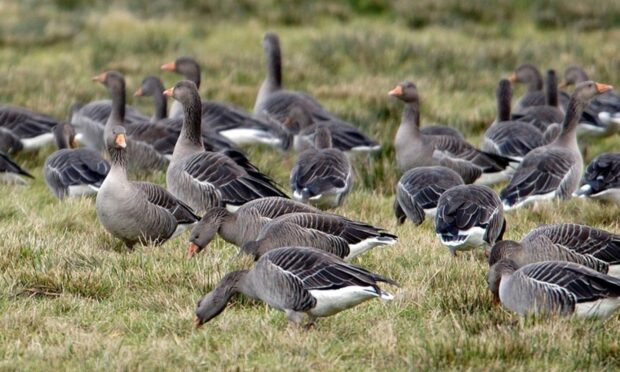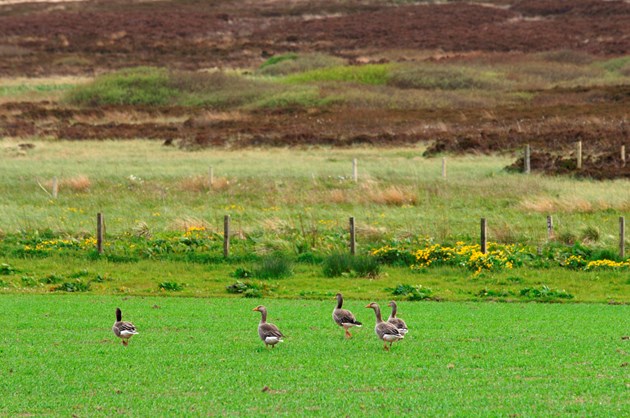Holyrood’s Rural Affairs, Islands and Natural Environment Committee recently took evidence on a petition that was lodged by the Scottish Crofting Federation (SCF).
The petition was calling on the Scottish Parliament to urge the Scottish Government to address the problems created by increasing populations of wild geese in the crofting areas as a matter of priority; reassess its decision to stop funding existing goose management programmes, and assign additional resources to crop protection and adaptive management programmes to ensure this threat to the future of crofting is averted.
The committee was seeking to establish whether the petition’s request has been addressed or should the petition be kept live.
We argued that the situation had got worse.
A worsening situation
In 2013, when the petition was lodged, there were 8,000 greylag geese counted in the entire crofting counties.
There are now 8,000 resident birds in Uist alone and the numbers in Lewis and Tiree are similar.
These are the areas that the Minister for Environment and Land Reform, Mairi McAllan, referred to when she said: “I understand how serious the impacts can be for crofting communities, and for the unique machair habitat and biodiversity that their traditional form of agriculture supports.”
Scottish Natural Heritage (SNH) established four adaptive management pilot projects in 2012.
The schemes were very successful and were on track to getting numbers down to a sustainable level – allowing crofters and geese to live together.
But every year the budget diminished and then in August 2021 SNH announced they would cease funding, which is an odd decision to make for successful ‘pilots’.
Goose population exploding
As expected, the goose population has exploded.
The minister has responded to SCF’s lobby by reinstating only £6,000 to each of the Hebridean schemes.
Let’s look at figures – Uist is a good example, but it is the same proportions for the other Hebridean islands.
There are about 8,000 greylag geese in Uist and we need to aim for a population of no more than 3,000.
It costs £8 per bird to shoot them so this year we could see a reduction of 750 birds.
The bird numbers increase through natural replacement at about 25% (2,000) or more per year. So even with current shooting levels the flock is increasing at 1,250 birds per year.
Just to halt increasing numbers, we need to shoot a minimum of 2,000 birds this year (at an approximate cost of £16,000) but we have to reduce them, so let’s say 3,000 birds, which would cost £24,000.
As we reduce the numbers the proportion will reduce so the cost will diminish year-by-year.
Realistically we can get numbers back to an acceptable level in three to five years and to maintain them at 3,000 will then cost £6,000 per year.
If we don’t get past that threshold and the goose numbers go up instead of down, the clearance of crofters to make way for geese will escalate.
Crofters will go out of business
Crofters have already started to give up and go out of business, and that will rapidly spiral.
If this happens all the good associated with crofting – including the high biodiversity of the machair and the preservation of heritage crops – will be sacrificed.
The Scottish Government, in spite of its pro-environment claims, is standing by watching this catastrophe unfold.
The committee decided to keep the petition live and to write to the Scottish Government and NatureScot (formerly SNH) for an update on goose management projects and to request details of the timetable and likely scope of the five-year review of goose policy which is scheduled to take place in 2022.
The committee also asked what consideration NatureScot has given to undertaking an assessment of the impact of geese numbers on biodiversity in order to inform both geese management and biodiversity policy.
Patrick Krause is chief executive of the Scottish Crofting Federation.



Conversation